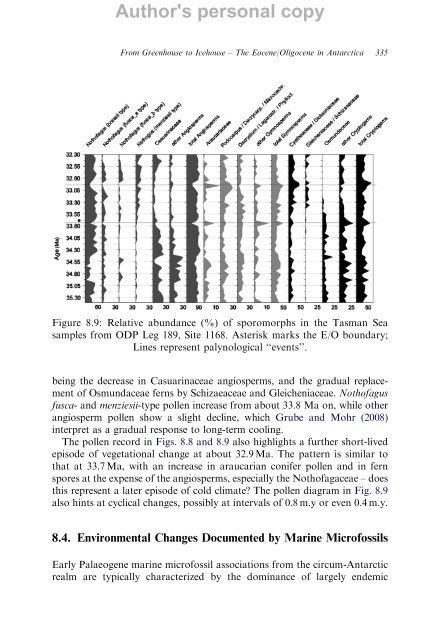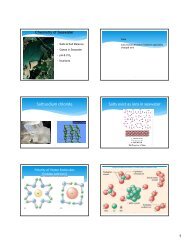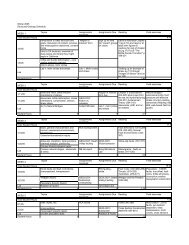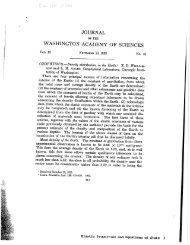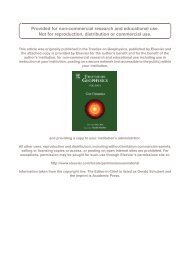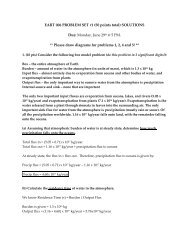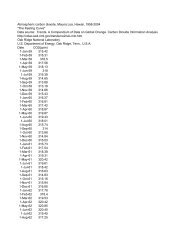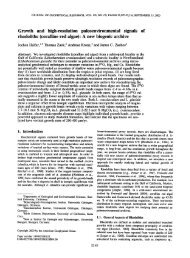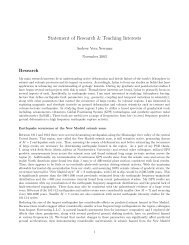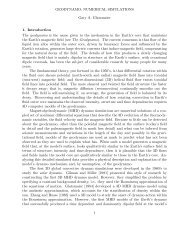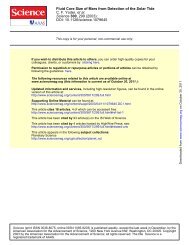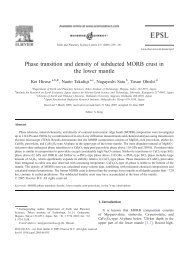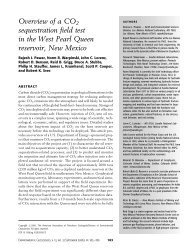From Greenhouse to Icehouse – The Eocene/Oligocene - UMass ...
From Greenhouse to Icehouse – The Eocene/Oligocene - UMass ...
From Greenhouse to Icehouse – The Eocene/Oligocene - UMass ...
Create successful ePaper yourself
Turn your PDF publications into a flip-book with our unique Google optimized e-Paper software.
Author's personal copy<br />
<strong>From</strong> <strong>Greenhouse</strong> <strong>to</strong> <strong>Icehouse</strong> <strong>–</strong> <strong>The</strong> <strong>Eocene</strong>/<strong>Oligocene</strong> in Antarctica 335<br />
Figure 8.9: Relative abundance (%) of sporomorphs in the Tasman Sea<br />
samples from ODP Leg 189, Site 1168. Asterisk marks the E/O boundary;<br />
Lines represent palynological ‘‘events’’.<br />
being the decrease in Casuarinaceae angiosperms, and the gradual replacement<br />
of Osmundaceae ferns by Schizaeaceae and Gleicheniaceae. Nothofagus<br />
fusca- andmenziesii-type pollen increase from about 33.8 Ma on, while other<br />
angiosperm pollen show a slight decline, which Grube and Mohr (2008)<br />
interpret as a gradual response <strong>to</strong> long-term cooling.<br />
<strong>The</strong> pollen record in Figs. 8.8 and 8.9 also highlights a further short-lived<br />
episode of vegetational change at about 32.9 Ma. <strong>The</strong> pattern is similar <strong>to</strong><br />
that at 33.7 Ma, with an increase in araucarian conifer pollen and in fern<br />
spores at the expense of the angiosperms, especially the Nothofagaceae <strong>–</strong> does<br />
this represent a later episode of cold climate? <strong>The</strong> pollen diagram in Fig. 8.9<br />
also hints at cyclical changes, possibly at intervals of 0.8 m.y or even 0.4 m.y.<br />
8.4. Environmental Changes Documented by Marine Microfossils<br />
Early Palaeogene marine microfossil associations from the circum-Antarctic<br />
realm are typically characterized by the dominance of largely endemic


